The longest nights and shortest days of the year* have gathered people together since times immemorial. The feeling that the Sun will not rise again, from before there were clocks, calendars and lanterns. When we, as humans, only had the fire and each-other, members of our tribes.

Read on to discover customs and habits that connect cultures we usually think of as being different and unrelated. Of course, nothing is unrelated and separate and customs worldwide**, aligned with the cycles of Nature, stem from the same human feelings of awe, fear, hope, love, friendship & solidarity.
**at the Equator, the solstices are barely marked at all. The Equator, at 0° latitude, receives a maximum intensity of the sun’s rays all year. As a result, areas near Earth’s Equator experience relatively constant sunlight and little solstice variation. Source.
Let us start with a definition of the term SOLSTICE:
Each of the two moments of the year when Earth’s rotation axis is tilted exactly towards the Sun, causing the day or the night to be the longest in the year.
*in relation to the Northern Hemisphere
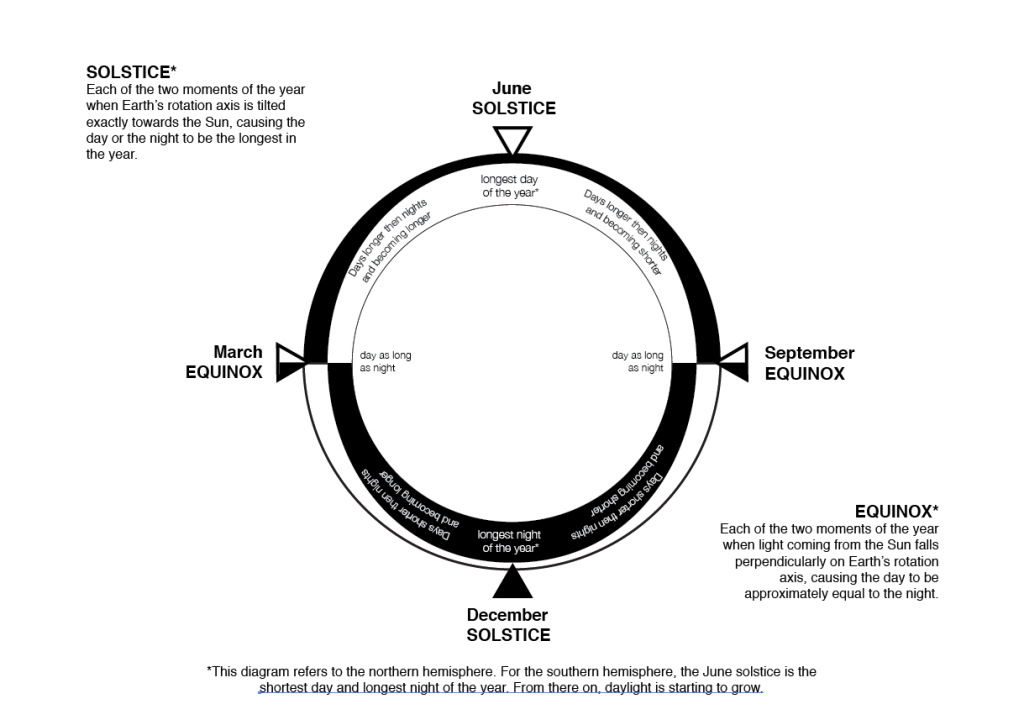
The December Solstice is also known as the Winter Solstice, Hiemal Solstice or Hibernal Solstice in the Northern Hemisphere.
We mostly relate to the Northern Hemisphere because the vast majority of people live above the equator. It occurs when the Northern Earth Pole has its maximum tilt away from the Sun.
The Rotation of Earth around the Sun
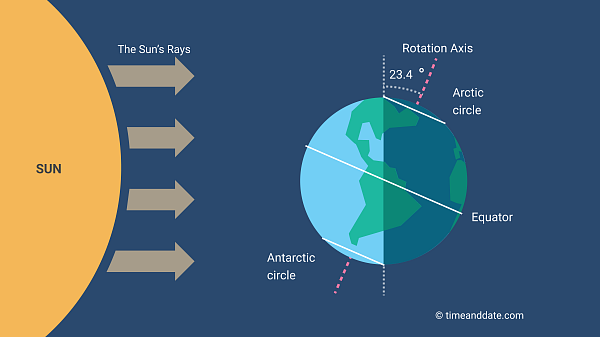
The solstices and equinoxes are defined by Earth’s position in its orbit relative to the Sun. They occur because the Earth’s axis of spin lies at an angle (23.5 degrees) to the plane on which it orbits the Sun.
December on the Kosmo Kalindar, incl. the date of the December Solstice
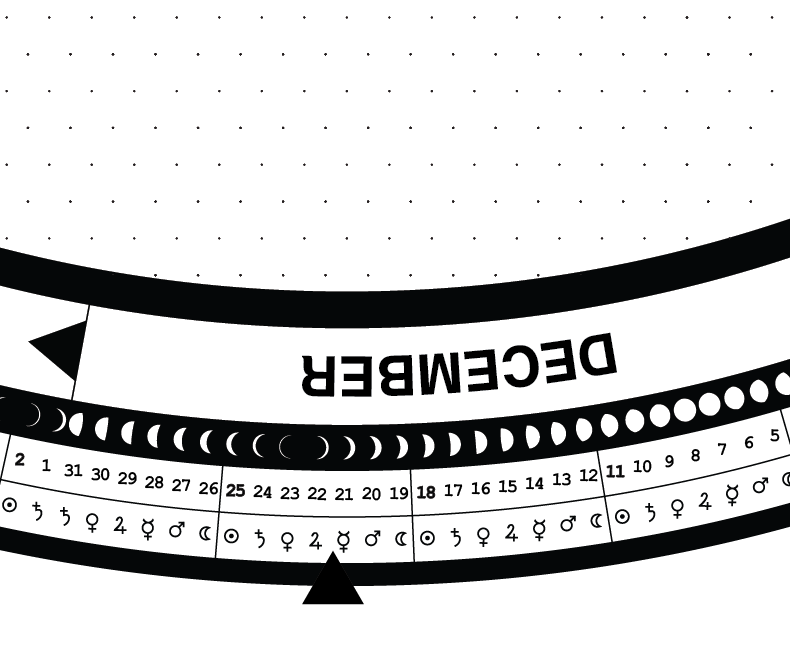
The black arrowhead on the wheel marks the maximum darkness.
Winter Solstice Celebrations Across Cultures of the World
Here are just a few of the celebrations that gather people together across the northern hemisphere, past and present, on the longest night of the year and the liminal time around this darkest point.
Notice how communities gathering around the fire, and around the table to share food, are central to the winter holidays.
Although winter is a time that encourages hibernation and non-action, humans as a species—Homo Sapiens—do not hibernate like the bear, for example, isolated from the community, but instead gather around the fire to keep warm, share food and to make sure the tribe members have what they need to make it through the winter.
No matter what we choose to celebrate, no matter what the culture we live in calls the solstice celebrations, these are holidays of the Light and the Sun, necessary forces for life on Earth.
Koročun, Kračun, Cărciun
Koročun or Kračun was a pagan Slavic holiday. It was considered the day when the Black God (Chernobog) and other spirits associated with decay and darkness were most potent. The first recorded usage of the term was in 1143, when the author of the Novgorod First Chronicle referred to the winter solstice as “Koročun”.
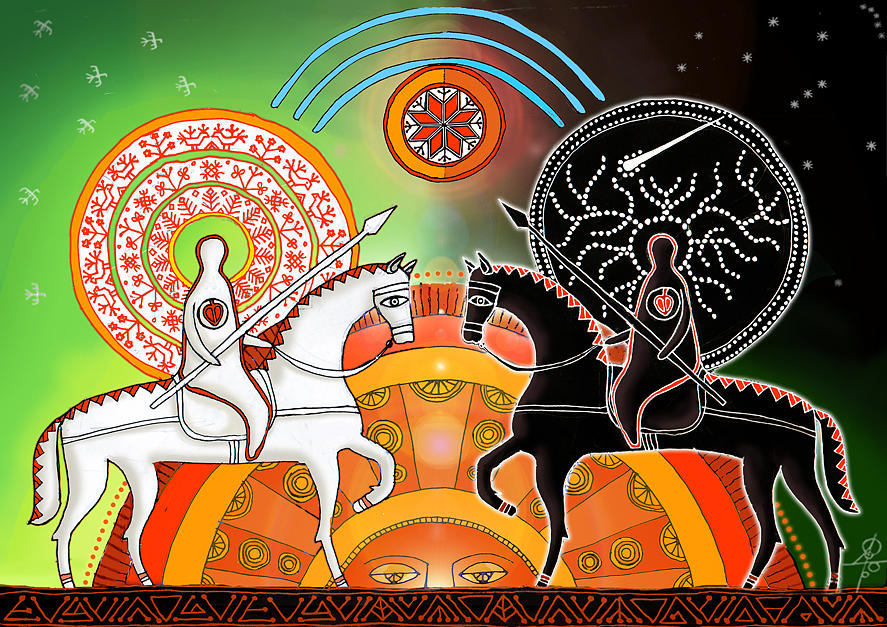
Koročun was celebrated by pagan Slavs on December 21, the longest night of the year and the night of the winter solstice. On this night, Hors, symbolizing old sun, becomes smaller as the days become shorter and dies on the night of the solstice. It is said to be defeated by the dark and evil powers of the Black God. On December 23, Hors is resurrected and becomes the new sun, Koleda.
Etymology
Max Vasmer derived the name of the holiday from the Proto-Slavic *korčunŭ, which is in turn derived from the verb *korčati, meaning to step forward. Gustav Weigand, Alexandru Cihac and Alexandru Philippide offer a similar Slavic etymology, based on kratŭkŭ (curt, short) or kračati (to make steps). On the other hand, Hugo Schuchardt, Vatroslav Jagić, and Luka Pintar proposed a Romanian origin of the word, as does the Romanian Etymological Dictionary, tracing its roots back to the Latin creatio,-nis. However, most probably the Romanian word, as well as the Hungarian, are loanwords with Slavic roots.
Modern scholars tend to associate this holiday with ancestor worship. On this day, Western Slavs lit fires at cemeteries to keep their loved ones warm, and organized feasts to honor the dead and keep them fed. They also lit wooden logs at local crossroads. In some Slavic languages, the word came to denote unexpected death of a young person and the evil spirit that shortens life.
Koliada or Koleda
Koliada or koleda (Cyrillic: коляда, коледа, колада, коледе) is the traditional Slavic name for the period from Christmas to Epiphany or, more generally, to Slavic Christmas-related rituals, some dating to pre-Christian times. It represents a festival or holiday, celebrated at the end of December to honor the sun during the winter solstice. It also involves groups of singers who visit houses to sing carols.
Koleda is also celebrated across northern Greece by the Slavic speakers of Greek Macedonia, in areas from Florina to Thessaloniki, where it is called Koleda (Κόλιντα, Κόλιαντα) or Koleda Babo (Κόλιντα Μπάμπω) which means “Koleda Grandmother” in Slavic. It is celebrated before Christmas by gathering in the village square and lighting a bonfire, followed by local Macedonian music and dancing.
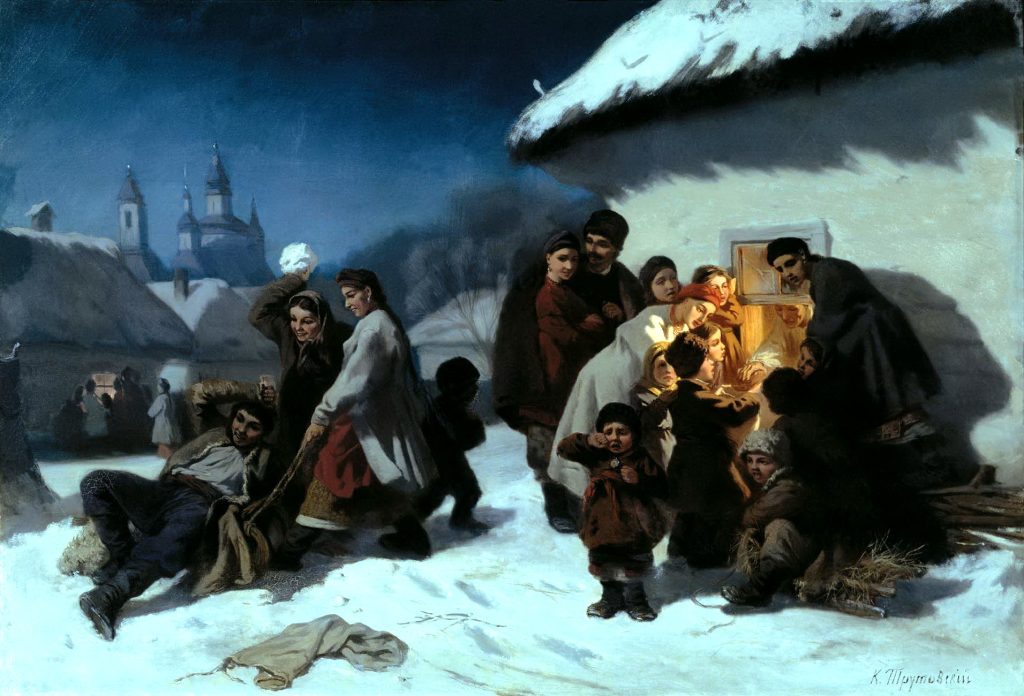
Yule or Yuletide
Wed, Dec 21, 2022 – Sun, Jan 1, 2023
Yule, actually Yuletide is a festival observed by the historical Germanic peoples. The earliest references to Yule are by way of indigenous Germanic month names Ærra Jéola or Jiuli and Æftera Jéola. Scholars have connected the celebration to the Wild Hunt, the god Odin and the pagan Anglo-Saxon Mōdraniht.
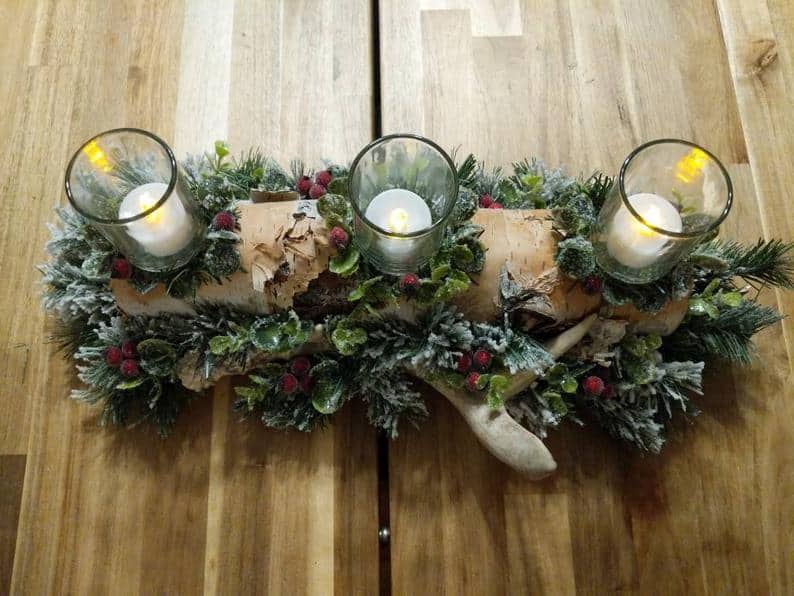
Etymology
Yule is the modern English representation of the Old English words ġéol or ġéohol and ġéola or ġéoli, with the former indicating the 12-day festival of “Yule” (later: “Christmastide“) and the latter indicating the month of “Yule”, whereby ǽrra ġéola referred to the period before the Yule festival (December) and æftera ġéola referred to the period after Yule (January).
Both words are thought to be derived from Common Germanic *jeχʷla-, and are cognate with Gothic (fruma) jiuleis; Old Norse, Icelandic, and Faroese jól; Danish, Swedish, and Norwegian jul and ýlir; Estonian jõul(ud), and Finnish joulu. The etymological pedigree of the word, however, remains uncertain, though numerous speculative attempts have been made to find Indo-European cognates outside the Germanic group, too.
The noun Yuletide is first attested from around 1475.
Here’s an article on a modern interpretation of the traditional feast of Yule.
Dongzhi Festival
The Dongzhi Festival or Winter Solstice Festival (Chinese: 冬至; pinyin: Dōngzhì; ‘winter’s extreme’) is one of the most important Chinese festivals celebrated by the Mainland Chinese, Hong Kong Chinese, Taiwan, Japanese, Vietnamese, Koreans and other East Asian-related people during the Dongzhi solar term (winter solstice), some day between December 21 to December 23.

The origins of this festival can be traced back to the yin and yang philosophy of balance and harmony in the cosmos.
After this celebration, it is believed that days will have longer daylight hours and therefore create an increase in positive energy flowing in. The philosophical significance of this is symbolized by the I Ching hexagram fu (Chinese: 复, “Returning”).
People in Taiwan also use the festive food as an offering dish to worship the ancestors.
Many people take invigorating tonic foods during this particular winter festival. To the Taiwanese, winter is a time when most physical activities should be limited and you should eat well to nourish your body. This practice follows the habits shown by many animals which follow the law of nature and hibernate throughout winter months to rejuvenate and to preserve life. In order to fight cold temperatures, it is necessary to eat more fatty and meaty foods during winter when your body can better absorb the rich and nutritional foods at this time due to a slower metabolic rate.
Christmas
An annual festival to commemorate the birth of Jesus Christ, observed primarily on December 25 as a religious and cultural holiday among bilions of people around the world.
Although the month and date of birth of Jesus’ birth are unknown, the church in the early fourth century fixed the date as December 25. This corresponds to the date of the Winter Solstice on the Roman Calendar.

A feast central to the Christian liturgical year, it is preceded by the season of Advent or the Nativity Fast and initiates the season of Christmastide, which historically in the West lasts twelve days and culminates on Twelfth Night.
Christmas Day is a public holiday in many countries, is celebrated religiously by a majority of Christians, as well as culturally by many non-Christians, and forms an integral part of the holiday season organized around it.
The traditional Christmas narrative recounted in the New Testament, known as the Nativity of Jesus, says that Jesus was born in Bethlehem, in accordance with messianic prophecies. When Joseph and Mary arrived in the city, the inn had no room and so they were offered a stable where the Christ Child was soon born, with angels proclaiming this news to shepherds who then spread the word.
The celebratory customs associated in various countries with Christmas have a mix of pre-Christian, Christian, and secular themes and origins. Popular modern customs of the holiday include gift giving; completing an Advent calendar or Advent wreath; Christmas music and caroling; viewing a Nativity play; an exchange of Christmas cards; church services; a special meal; and the display of various Christmas decorations, including Christmas trees, Christmas lights, nativity scenes, garlands, wreaths, mistletoe, and holly.
Etymology
The English word “Christmas” is a shortened form of “Christ’s Mass”. The word is recorded as Crīstesmæsse in 1038 and Cristes-messe in 1131.[24] Crīst (genitive Crīstes) is from Greek Khrīstos (Χριστός), a translation of Hebrew Māšîaḥ (מָשִׁיחַ), “Messiah”, meaning “anointed”; and mæsse is from Latin missa, the celebration of the Eucharist.
Yaldā Night
Yaldā Night (Persian: شب یلدا shab-e yalda) or Chelle Night (also Chellah Night, Persian: شب چلّه shab-e chelle) is an ancient festival in Iran, Iraqi Kurdistan, Afghanistan, Azerbaijan and Turkey celebrated on the winter solstice. This corresponds to the night of December 20/21 (±1) in the Gregorian calendar, and to the night between the last day of the ninth month (Azar) and the first day of the tenth month (Dey) of the Iranian solar calendar.

The longest and darkest night of the year is a time when friends and family gather together to eat, drink and read poetry (especially Hafez) and the Shahnameh until well after midnight.
Food plays a central role in the present-day form of the celebrations. In most parts of Iran the extended family come together and enjoy a fine dinner. A wide variety of fruits and sweetmeats specifically prepared or kept for this night are served. Foods common to the celebration include watermelon, pomegranate, nuts, and dried fruit, and pomegranates and watermelons are particularly significant. The red color in these fruits symbolizes the crimson hues of dawn and glow of life.
These items and more are commonly placed on a korsi, which people sit around. In some areas it is custom that forty varieties of edibles should be served during the ceremony of the night of Chelleh
Fruits and nuts are eaten. After dinner, the elders entertain the others by telling them tales and anecdotes. Another favorite and prevalent pastime of the night of Chelleh is fāl-e Ḥāfeẓ, which is divination using the Dīvān of Hafez. It is believed that one should not divine by the Dīvān of Hafez more than three times, however, or the poet may get angry.
References to other older festivals held around the winter solstice are known from both Middle Persian texts as well as texts of the early Islamic period. In the 10th century, Al-Biruni mentions the mid-year festival (Maidyarem Gahanbar) that ran from 11-15 Dae. This festival is generally assumed to have been originally on the winter solstice, and which gradually shifted through the introduction of intercalation
In ancient Iran, once lived a goddess named Mithra. She was the goddess of light and brought warmth to lives. Yalda night celebration is believed to be a dedication to her, who brings light back into the people’s lives. To live a minute of brightness more each day is a privilege ancient Iranians valued and is celebrated through centuries.
Chawmos
Chawmos (cawmōs, ghona chawmos yat, Khowar “chitrimas” from cāturmāsyá, CDIAL 4742) is a festival of the Kalash people of Pakistan. It is also sometimes spelled chaumos and celebrated for two weeks at winter solstice (Dec. 7-22), at the beginning of the month chawmos mastruk, for two weeks.
Chawmos comes after the Kalash finish their fieldwork and store their cheese, fruit, vegetables and grains for the year.
It is celebrated by feasting until the elders, who sit on a hilltop, watching the sun reaching the orbit,declare the advent of the New Year. Children go up to the mountain, where they divide into boys and girls, and respectively make a big bonfire.
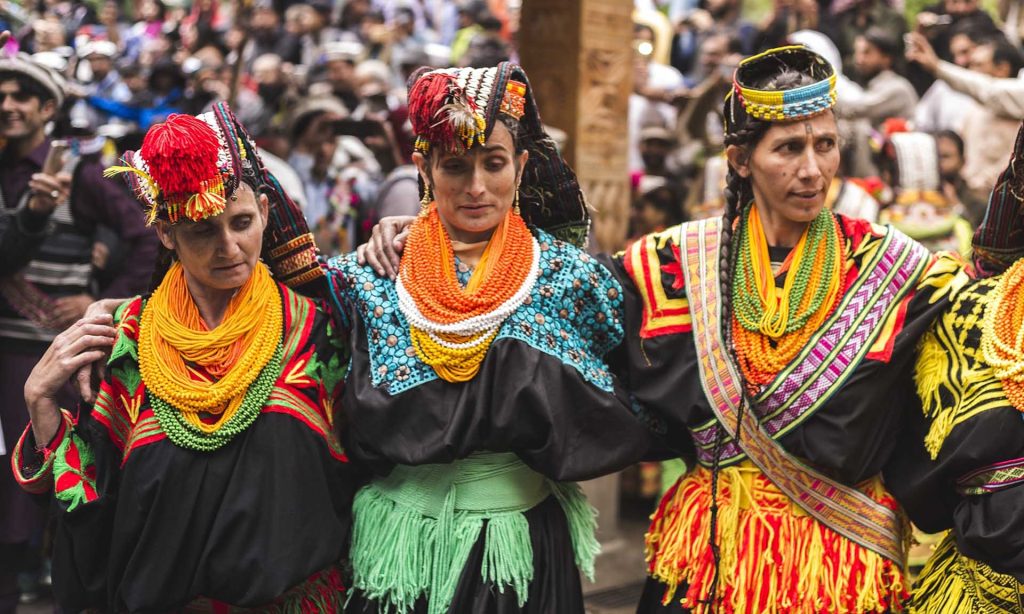
In the second week of Chawmos (15-22 December), the people thank their god with dance and music. This part of festival is public. It involves much music and dancing, and the sacrifice of many goats. It is dedicated to the god Balimain who is believed to visit from the mythical homeland of the Kalash, Tsyam (Tsiyam, tsíam), for the duration of the feast. Food sacrifices are offered at the clans’ Jeshtak shrines, dedicated to the ancestors.
Saturnalia
In Ancient Rome, the Winter Solstice Festival Saturnalia started on December 17 and lasted for a week, up to December 23.
Held in honour of the god Saturn, father of the Gods, the Festival was characterized by the suspension of discipline and reversal of the usual order.
Grudges and quarrels were forgotten while businesses, courts and schools were closed.
Wars were interrupted or postponed, and slaves were served by their masters.
Masquerades often occured on this time.
The holiday was celebrated with a sacrifice at the Temple of Saturn, in the Roman Forum, and a public banquet, followed by private gift-giving, continual partying, and a carnival atmosphere that overturned Roman social norms: gambling was permitted, and masters provided table service for their slaves as it was seen as a time of liberty for both slaves and freedmen alike.
A common custom was the election of a “King of the Saturnalia”, who gave orders to people, which were followed and presided over the merrymaking. The gifts exchanged were usually gag gifts or small figurines made of wax or pottery known as sigillaria. The poet Catullus called it “the best of days”
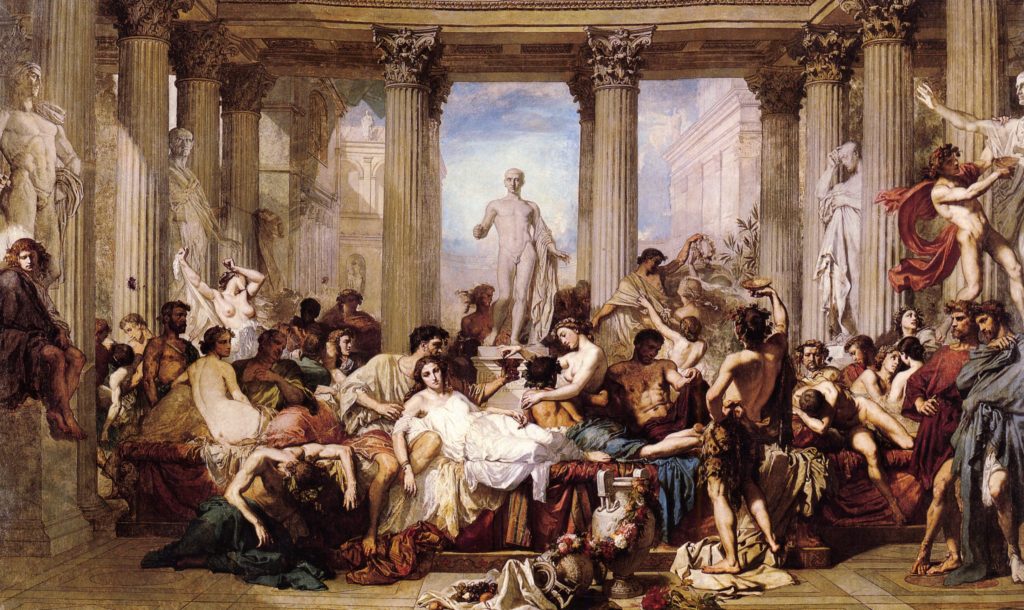
The Saturnalia reflects the contradictory nature of the deity Saturn himself: “There are joyful and utopian aspects of careless well-being side by side with disquieting elements of threat and danger.”
The third century Neoplatonic philosopher Porphyry took an allegorical view of the Saturnalia. He saw the festival’s theme of liberation and dissolution as representing the “freeing of souls into immortality”—an interpretation that Mithraists may also have followed, since they included many slaves and freedmen. According to Porphyry, the Saturnalia occurred near the winter solstice because the sun enters Capricorn, the astrological house of Saturn, at that time. In the Saturnalia of Macrobius, the proximity of the Saturnalia to the winter solstice leads to an exposition of solar monotheism, the belief that the Sun (see Sol Invictus) ultimately encompasses all divinities as one.[95]
As a result of the close proximity of dates, many Christians in western Europe continued to celebrate traditional Saturnalia customs in association with Christmas and the surrounding holidays.
Like Saturnalia, Christmas during the Middle Ages was a time of ruckus, drinking, gambling, and overeating.
Kosmosylvana

The first reason that the Kosmo Kalindar exists, Kosmosylvana started as a solstice celebration at a local forest in Romania on the date of 21.12.2012, supposedly the End of the World according to the Mayan Prophecy.
It was first called End of the World as we Know it Party and truth be told, our world has never been the same ever since.
The small, intimate celebration became a ritual, thus December 2022 marked the 10th year of human presence, self-organising and gathering around the fire at the edge of the Stanciova Forest.
The new, alternative Winter and Summer Solstice Celebrations needed a calendar, so in december 2014 the first Kosmo Kalindars were handed out to participants at the event.
Since then, both celebrations and the editing of the round, lunar and solar calendars have been flowing in cycles, uninterrupted, just like the seasons, moon phases and the rotations of Earth around the Sun. And this is why you read this article, dear human. Thank you!

Kosmo Kalindars: 2015-2017
Image Credit: Adela Fofiu
More from our blog:
- Janus — God of Beginnings, Endings and of Doorways.
- Valentine’s Day, Lupercalia or … Whatever Day?
- December Solstice: What is it and how does the World celebrate this season?
- The Ancestral Circular Calendar
- St. Andrew and the Wolves
